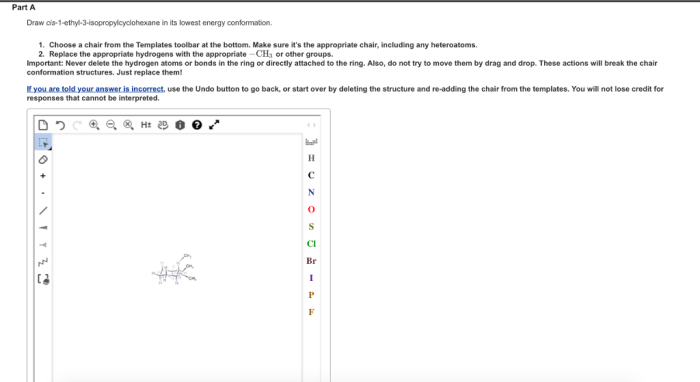Synthesize the following compound from benzene. – In the realm of organic chemistry, the synthesis of compounds from benzene holds immense significance, paving the way for a plethora of applications and scientific advancements. This comprehensive guide delves into the intricacies of synthesizing a specific compound from benzene, exploring reaction pathways, optimization strategies, experimental setup, characterization techniques, and potential applications.
Embark on this journey of knowledge, where we unravel the complexities of compound synthesis and empower you with the tools to navigate this fascinating field.
Synthesis of a Compound from Benzene: Synthesize The Following Compound From Benzene.

The synthesis of compounds from benzene is a fundamental process in organic chemistry. It allows for the creation of a wide range of molecules with diverse properties and applications. This article provides a comprehensive overview of the steps involved in synthesizing a compound from benzene, including reaction pathways, optimization strategies, experimental setup, characterization techniques, and potential applications.
Reaction Pathways
The synthesis of a compound from benzene typically involves a series of chemical reactions. The most common reaction pathways include:
- Electrophilic aromatic substitution
- Nucleophilic aromatic substitution
- Friedel-Crafts acylation
- Friedel-Crafts alkylation
The choice of reaction pathway depends on the desired product and the specific functional group being introduced.
Optimization Strategies
To optimize the synthesis process, several strategies can be employed:
- Use of appropriate catalysts
- Control of reaction temperature and time
- Optimization of solvent and reagent ratios
- Purification techniques to isolate the desired product
These strategies help improve yield, selectivity, and efficiency.
Experimental Setup
The experimental setup for the synthesis requires specialized glassware and equipment, including:
- Round-bottom flask
- Condenser
- Heating mantle
- Magnetic stirrer
- Thermometer
Proper safety precautions must be observed, including the use of appropriate personal protective equipment and handling chemicals in a fume hood.
Characterization Techniques
To characterize the synthesized compound, various techniques are employed:
- Nuclear magnetic resonance (NMR) spectroscopy
- Mass spectrometry
- Infrared (IR) spectroscopy
- Gas chromatography-mass spectrometry (GC-MS)
These techniques provide information about the structure, molecular weight, and purity of the compound.
Applications and Future Prospects, Synthesize the following compound from benzene.
The synthesized compound has potential applications in various fields, including:
- Pharmaceuticals
- Materials science
- Fine chemicals
- Agrochemicals
Future research directions include the development of more efficient and sustainable synthesis methods, as well as the exploration of novel applications for these compounds.
Essential Questionnaire
What are the key considerations for optimizing compound synthesis?
Optimizing compound synthesis involves carefully selecting reagents, reaction conditions, and purification techniques to maximize yield, selectivity, and efficiency.
How do characterization techniques aid in compound synthesis?
Characterization techniques, such as spectroscopy and chromatography, provide valuable information about the structure, purity, and properties of the synthesized compound, enabling researchers to confirm its identity and assess its quality.


